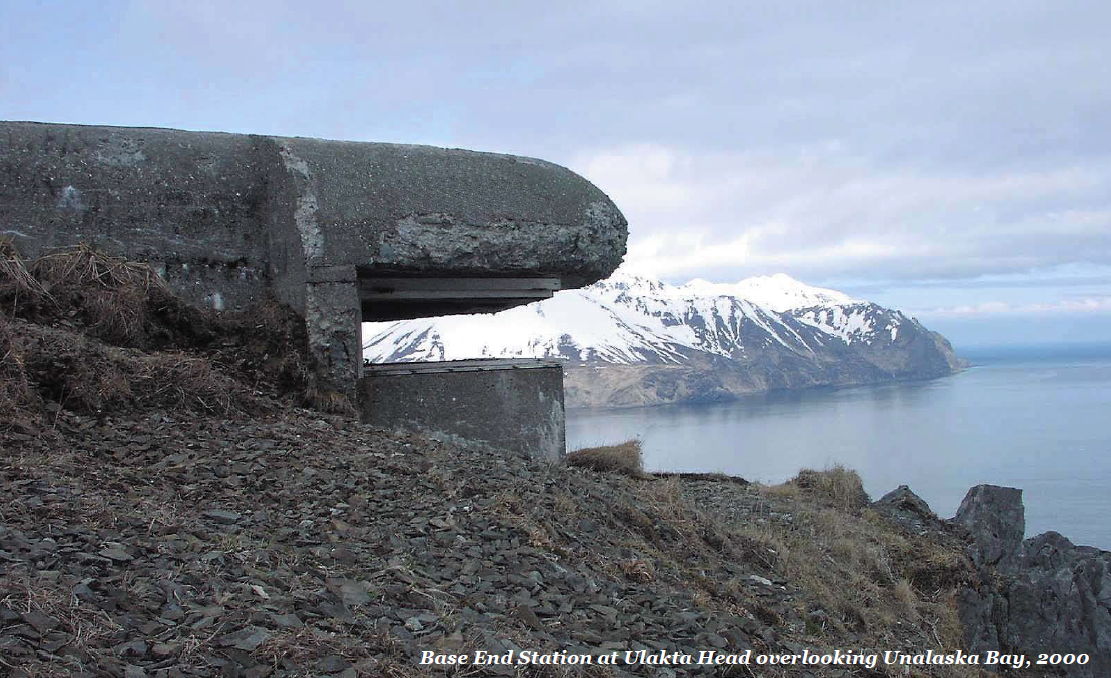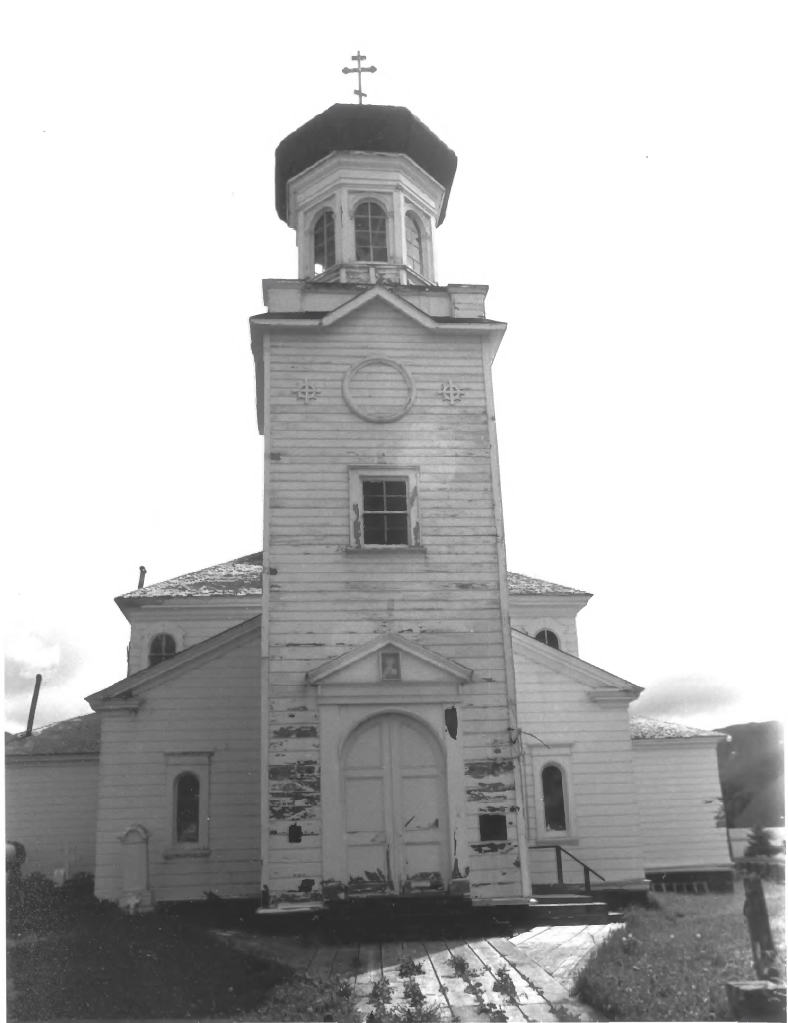City of Unalaska
1st Class City
2022 Population: 4,113
Size: 111 Square Miles
Unalaska Historic Preservation Commission: Members include the City's Planning Commission and its ex officio members (the City Manager and Director of Planning).
Date certified: January 24, 1991
Current Initiatives:Update to the historic resources inventory and Henry Swanson House capital funding
Meets:Third Thursday of the month at 7:00 pm in City Hall Council Chambers
Commission Website
Alaskan Community Profile
Photo courtesy NPS/Anne Matsov

-
CLG Grants

Historic Preservation Planning Grants
Unalaska Preservation Plan Revision. 1993. Survey and Inventory Grants
Unalaska Historic Site Inventory. 2002.
Historic Mooring and Dock Sites. 1992.National Register of Historic Places Grants
S.S. Northwestern National Register Nomination. 1992.
Historic Preservation Education Grants
Margaret Bay Interpretive Signage and Exhibit. 1997.
Commission Training Grants
Local Historic Preservation Commission Training, National Trust for Historic Preservation Conference. 2012.
CLG Workshop. 2000.
Section 106 Training. 1999.
National Alliance of Preservation Commissions Forum. 1999.
Economic Perspectives: Making the Historic Preservation Connection Workshop. 1994, 1993.
-
A Brief History
-
Unangan people had settlements on Unalaska Island and neighboring Amaknak Island long before the Russians arrived to trade with them in the 1760s. A Russian trading company built a fur warehouse at Illiuliak Bay in 1770, and over the years Ounalashka, as the Russians called it, became the Aleutian district headquarters for the Russian-American Company. In 1824, Ivan Veniaminov, a Russian Orthodox missionary (now St. Innocent), arrived at Unalaska. Based there for ten years, he traveled to many islands, learned the Native language, translated religious texts into Unangan, and recorded invaluable information about the Native people and the natural resources. Orthodoxy became strong in the community, and the church Veniaminov built was expanded in the 1890s and is now a National Historic Landmark.
When American and British whalers started venturing into the Bering Sea and Arctic Ocean in the 1840s, Unalaska became a stop for supplies and repairs before ships crossed through Unimak Pass into the treacherous Bering Sea. In the 1880s steam powered whaling ships replaced sailing ships and Unalaska became a coaling station. It would be an important stop for gold seekers at the turn of the century as well. The business properties of the Russian-American Company had been purchased by a group of men who created the Alaska Commercial Company in the late 1860s, and the company established its western district headquarters at Unalaska. In 1880, the U.S. Revenue Marine Service started its annual patrol of Arctic waters and established a base at Unalaska. Around the same time, the Methodist Church opened a mission and the Jesse Lee Home for Children at Unalaska. The home provided for children who lost parents in the 1900 and 1919 epidemics. The home moved to Seward in 1925.
The conservation movement in the U.S., that started in the late 1800s, highlighted the overhunting of sea mammals in the North Pacific as part of its campaigns for government management of wildlife and their habitat. In 1909 President Theodore Roosevelt reserved islands in the Bering Sea for seabirds and mammals, and in 1911 the first international wildlife treaty was signed by the U.S., Russia, Japan and Great Britain to protect the fur seals and sea otters in the North Pacific. In 1913 the U.S. made the entire Aleutian Chain a reservation for native birds, fur farming, reindeer herding, and development of the fisheries, with a special clause allowing for the land's use, should it be necessary, for national defense.
In 1939 the U.S. established military bases in Alaska to patrol and protect U.S. territory in the Pacific, one on Amaknak Island. The Japanese attacked the Dutch Harbor naval and army bases on June 3-4, 1942, six months after Pearl Harbor and the U.S. entry into World War II. The military commanders hastily decided to evacuate civilians from the Aleutian and Pribilof islands. For the next year and a half, Dutch Harbor was a hub for combat and construction as the U.S. bombed the Japanese who took Attu and Kiska Islands and fought to retake the islands during the summer of 1943. At the end of the war, the bases closed and it would be years before the government cleaned up formerly used defense sites. In the 1980s a number of World War II bases were designated National Historic Landmarks, and subsequently the National Park Service made Unalaska one of its affiliated park units.
The arrival of the military led the city to incorporate in 1942. In the 1970s the North Pacific fisheries boomed, and Unalaska became the largest fisheries port in the U.S. by volume caught. The king crab fishing fleet headquartered at Unalaska beginning in the 1950s until the industry crashed in 1982, but the huge groundfishing fleet sill bases at Unalaska and ships from many countries call. Fish processors built large plants around Unalaska and Amaknak Islands. People from many Asian countries moved to the community for jobs in the fisheries, and today are over a third of the city's population. With passage of the Alaska Native Claims Settlement Act in 1971, the Aleut regional corporation and a number of village corporations organized and are the major private land holders. The Unangan fought for restitution from the U.S. Government for their poor treatment during World War II and the damage U.S. troops did to their property while they were interned in Southeast Alaska. Part of the settlement, made in the 1980s, was used to restore their Russian Orthodox churches.
Finally in the 1980s a bridge connected Amaknak and Unalaska Islands. The islands have a pretty extensive road system; many roads having been built by the military during the 1940s. Access to the city from other places is by air or sea—the town is served by the Alaska Marine Highway. Visitors are attracted to the city for its Native and Russian heritage, World War II history, scenery, wildlife, and to fish.
-
-
National Register of Historic Places Listings

Dutch Harbor Naval Operating Base and Fort Mears, U.S. Army Amaknak Island Sitka Spruce Plantation Amaknak Island Church of the Holy Ascension Unalaska S.S. Northwestern Shipwreck Site Address Restricted
